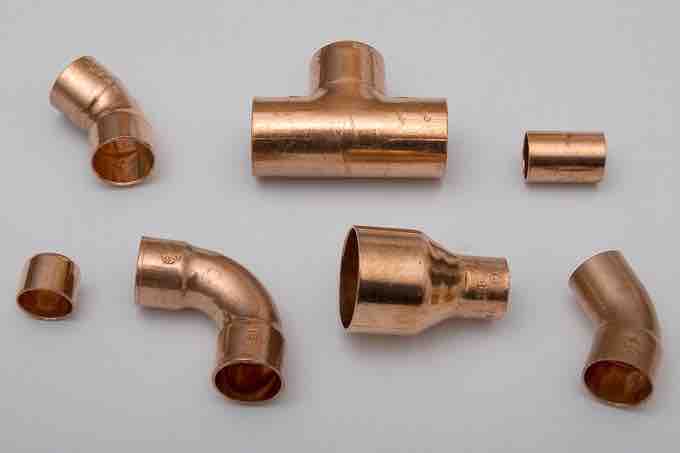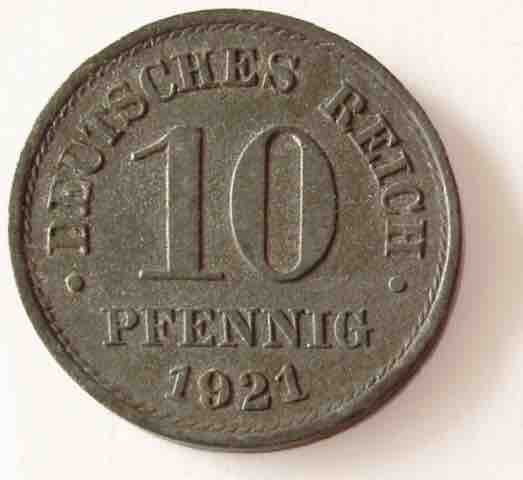Copper
Copper is a member of a family of metals known as the "coinage metals," which includes copper, silver, gold, and roentgenium. Because of their softness, coinage metals are easily fashioned into coins. Their comparative rarity and attractiveness, along with their resistance to corrosion, make them compact stores of wealth. However, pure copper is too soft to have structural value, but copper alloys with zinc and tin to form harder brasses and bronzes. Brass and bronze were essential components of the earliest metal tools.

Copper Pipes
Copper is heavily used due in many areas, including copper piping.
Copper is the most heavily used of the coinage metals due to its electrical properties, its abundance (compared to silver and gold), and the properties of its brass and bronze alloys. Until aluminum became commonplace, copper was second only to iron in production among the metals. Copper is easy to identify due to its reddish color.
Copper oxidizes—with some difficulty—to the +1 state in halides and an oxide, and to the +2 state in salts such as copper sulfate CuSO4. Soluble copper compounds are easily identified by their distinctive blue-green color.
Zinc
The zinc family consists of zinc, cadmium, mercury, and copernicum. Zinc and cadmium are soft metals that easily oxidize to the +2 oxidation state. Neither of these two metals appears uncombined in nature. Zinc is used in alloys with copper to create a harder metal known as brass. In galvanization, zinc coats iron by oxidizing to form a protective layer of zinc oxide (ZnO) that protects the iron from oxidation. Zinc oxide is much safer than lead oxide, and it is often used in white paint. Since 1982, zinc has been the main metal used in American pennies. It is now used in new organ pipes.
Zinc is an essential trace element for living things and has some germicidal properties, but can be toxic in large quantities. Zinc pennies should never be swallowed.

A zinc coin
Zinc is an essential trace element for living things. It has some germicidal properties and it is toxic in large quantities. Zinc pennies should never be swallowed.
Iron, Cobalt, and Nickel
Iron, cobalt, and nickel are fairly good reducing agents, so they rarely appear uncombined in nature. Iron is one of the most common elements in the universe. Uncombined iron, cobalt, and nickel can be found in meteors.
Cobalt
Like nickel, cobalt in the Earth's crust is found only in chemically combined form, save for small deposits found in alloys of natural meteoric iron. The free element, produced by reductive smelting, is a hard, lustrous, silver-gray metal.
The earth itself has a hot, dense core made largely of iron and nickel. At the temperatures characteristic of the Earth's core, iron and nickel form a giant natural magnet which creates the Earth's magnetic field. This magnetic field blocks dangerous radiation that would kill life on the Earth.